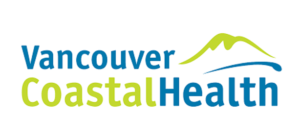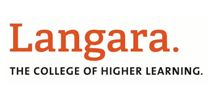Visitation Program
Visitation Guidelines
(UPDATED: April 6, 2023)
The Provincial Health Officer has announced the end of respiratory season and in consideration of the epidemiology for influenza, RSV and COVID-19, is lifting the mandatory requirements with respect to visitors in long-term care and seniors’ assisted living.
As of Thursday, April 6, the Visitation and Visitor Appeal and Review – February 5, 2021 order will be rescinded.
The Overview of Visitors in Long-Term Care and Seniors’ Assisted Living will also cease to be in effect at this time. This means the requirements from the Overview will no longer apply, including:
- Visitors will no longer be required to provide their vaccination status, and those who are unvaccinated for COVID-19 will be able to visit freely at long-term care and assisted living sites.
- Visitors will no longer be required to undergo a rapid antigen test or confirm a recent negative rapid antigen test prior to visiting.
- Visitors will not be required to wear masks while visiting long-term care and assisted living sites, unless specifically required based on a Point of Care Risk Assessment (assessment by a health care worker that masking is required based on the risks of infection, including a resident’s symptoms, the type of interaction with residents, and the environment).
- There will be no restrictions on gatherings, events or activities including visitors, indoors or outdoors, regardless of visitor vaccination status.
- Active screening of visitors is no longer required (in favour of passive screening – signs and reminders not to visit when sick).
The orders requiring health care staff to be vaccinated and allowing for the collection of their vaccination information remain in place.
The Infection Prevention and Control: Guidance for Long-Term Care and Seniors’ Assisted Living Settings, which guides long-term care and assisted living staff in infection prevention and control practices, remains in place and is being updated to reflect changes due to the ending of respiratory season.
Medical Health Officers and public health staff continue to have the authority to declare outbreaks and require restrictions and measures to be implemented at their discretion.
QUESTIONS AND ANSWERS
Does this mean visiting and long-term care and seniors’ assisted living is returning to how it was before the COVID-19 pandemic?
- Yes, after three years, visiting in these setting is returning to normal.
Can LTC and AL operators continue to impose restrictions or limitations on visits in these settings after the PHO order is rescinded?
- The Residential Care Regulation and Assisted Living Regulation both require that residents are free to receive visitors of their choice at any time, to the greatest extent possible.
- The regulations also require that health and safety is maintained while allowing visitors. Any limitations on visiting must be for a health and safety reason.
- Once the PHO order is rescinded, operators must not restrict visitors based on their vaccination status or whether they have undergone a rapid test.
If visitors are no longer required to be vaccinated, does this mean unvaccinated staff can return to working in long-term care and assisted living settings?
- The orders requiring that staff in these settings are vaccinated (or have a medical exemption) remain in place.
- It is expected that requirements for health care staff to be vaccinated will remain in place indefinitely.
Does this mean that masks are no longer required to be worn by long-term care and assisted living staff and visitors?
- That is correct. Sites can discontinue universal masking of health care workers and visitors, regardless of immunization status, unless required in a clinical area based on a Point-of Care Risk Assessment.
- Masking requirements are removed for health care workers and visitors in all common areas, non-clinical, and administrative areas. Masks are to be worn in these areas based on Point-of Care Risk Assessment or as required by workplace communicable disease safety plans.
- Operators are expected to continue to make masks available at entrances for those who wish / need them.
Are there any further restrictions to group gatherings or capacity in a long-term care or assisted living facility?
- No, there are no capacity limits.
Will enhanced cleaning and disinfection practices continue?
- Yes, as per the Infection and Protection and Control Guidance, enhanced cleaning and disinfection practices continue to be recommended, including within resident rooms.
Will the expectations surrounding hand hygiene remain in place?
- Yes, rigorous hand washing is still expected, and sites will continue to have alcohol-based hand rub available at entrances for people to use.
Will Point-of Care Risk Assessments remain in place?
- The COVID-19-specific Point-of Care Risk Assessments for guiding the selection of Personal Protective Equipment (PPE) will be retired.
- Care homes are expected to adopt “all hazards” Point-of Care Risk Assessments that consider all occupational health risks, including COVID-19.
Is a single entry point to a care facility still required, such as through the front entrance monitored by a screener (a.k.a., ambassador)?
- No, long-term care homes are free to allow visitors to enter through other entry points as they wish, as it was prior to the onset of COVID-19.
- Masks and alcohol-based hand rub should be available at all entry points.
Will people who have tested positive for COVID-19 be able to visit?
- People who are ill or experiencing symptoms of illness should not be visiting long-term care and seniors’ assisted living sites. This includes those who’ve tested positive for COVID-19.
- Rapid testing is no longer required for visitors and they will not be ‘actively’ screened, however, so visitors will need reminders not to visit when ill.
Will ‘active screening’ of visitors still be required?
- No, active screening is discontinued, in favour of passive screening.
- Passive screening means that visitors will assess their own risk factors and determine if they should enter a site. Passive screening includes:
- Signs which inform people not to visit if they are ill or have symptoms of illness, and reminding visitors to practice hand hygiene.
- Other reminders from staff and screeners that people who are ill should not visit (without asking each visitor whether they are experiencing symptoms of illness)
Will visitors still be required to sign-in?
- There will be no requirement for visitors to sign-in. Operators may have their own processes for tracking visitors, as might have been in place prior to COVID-19.
Are screeners (a.k.a., ambassadors) still required?
- While screeners are no longer needed to monitor visitor vaccination, rapid testing, and masking, screeners may still be used to greet people, ensure masks are available to those who want / need one, remind about hand hygiene, and support passive self screening.
- Screeners can be used for other purposes at sites, as identified by operators, within the parameters of their job descriptions.
- It is anticipated that screeners will be required again once respiratory illness season is starts in the fall.
What is the expectation for staff returning to work after an exposure?
- The COVID-19-specific return to work policies and exposure guidance is being retired.
- Care homes are to adopt occupational health policies and exposure guidance for returning to work following any serious respiratory illness, including COVID-19.
Is this change permanent?
- It is expected that once respiratory illness season starts in the fall that some measures may be reinstituted, including:
- Health care workers and visitors may be required to wear masks in certain circumstances, as determined by the Provincial Health Officer.
- Screeners (a.k.a., ambassadors) will again be required to be situated at care home front entrances to ensure visitors are masking, accessing hand hygiene, and passive symptom self-checking during respiratory season.
- Other measures may be determined based on emerging scientific evidence.
- It is expected that once respiratory illness season starts in the fall that some measures may be reinstituted, including:









